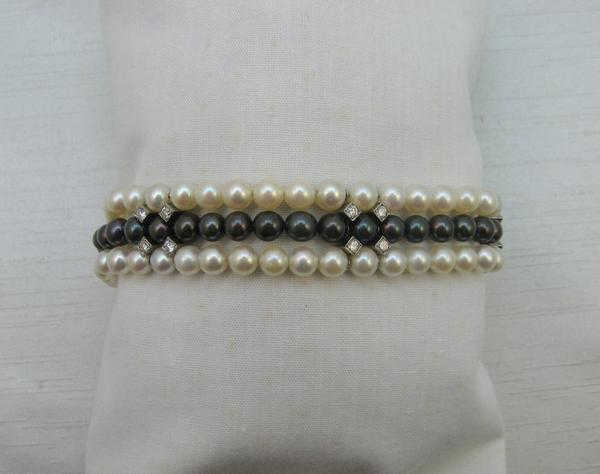Types of pearls and how to care for them
There are many different types of pearl, some are rarer than others
Pearls are created from the protective reaction of an oyster or mussel to the accidental or deliberate introduction of a foreign body into the shell.
A pearl sac will form and concentric layers of nacre that surround the foreign body, slowly form the pearl, layer by layer producing the lustre that pearls are famed for.
Cultured and Natural pearls
A natural pearl is formed accidentally and without any human intervention, while a cultured pearl is started by the introduction of an irritant by man, after which the process is continued solely by the metabolism of the living mollusc.
Pearls are measured in half mm increments. As a general rule a necklace will have pearls that measure between 7 and 9 mm, although antique pearl necklaces may have smaller pearls, many being graduated in size.
A feature of antique pearls will be their varying clasps that are gemset to add uniqueness to the piece.
Seed pearls are 2mm in diameter or less and have occurred accidentally in a pearl bearing mussel.
Pearls are best stored separately from any other piece of jewellery to avoid scratching the surface. Ideally store them in a cloth bag and keep them in your jewellery box or tucked away in a drawer.
Avoid anything acidic coming into contact with your pearls, such as perfume, body cream or hairspray. Pearls should be the last thing that you put on after getting dressed. Anything acidic can erode the outer layers of a pearl and start to dull the nacre.
Before putting your pearls away, wipe them with a soft cloth and store – this will remove traces of make-up, oils etc.
If you have pearl necklaces it is advisable to take them into a jewellers every five years or so and have them checked to see if they need re-stringing. It is a small investment to keep them in pristine condition.
https://friarhouse.com/





